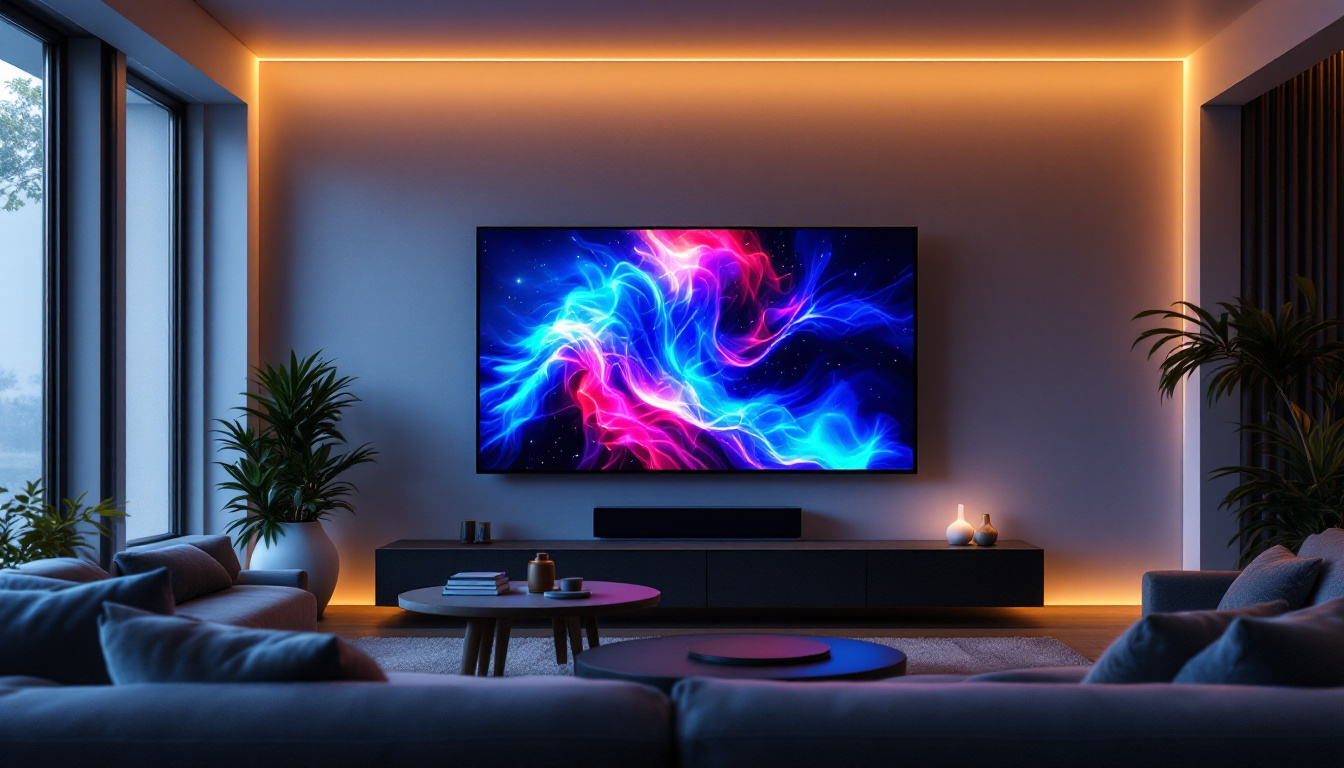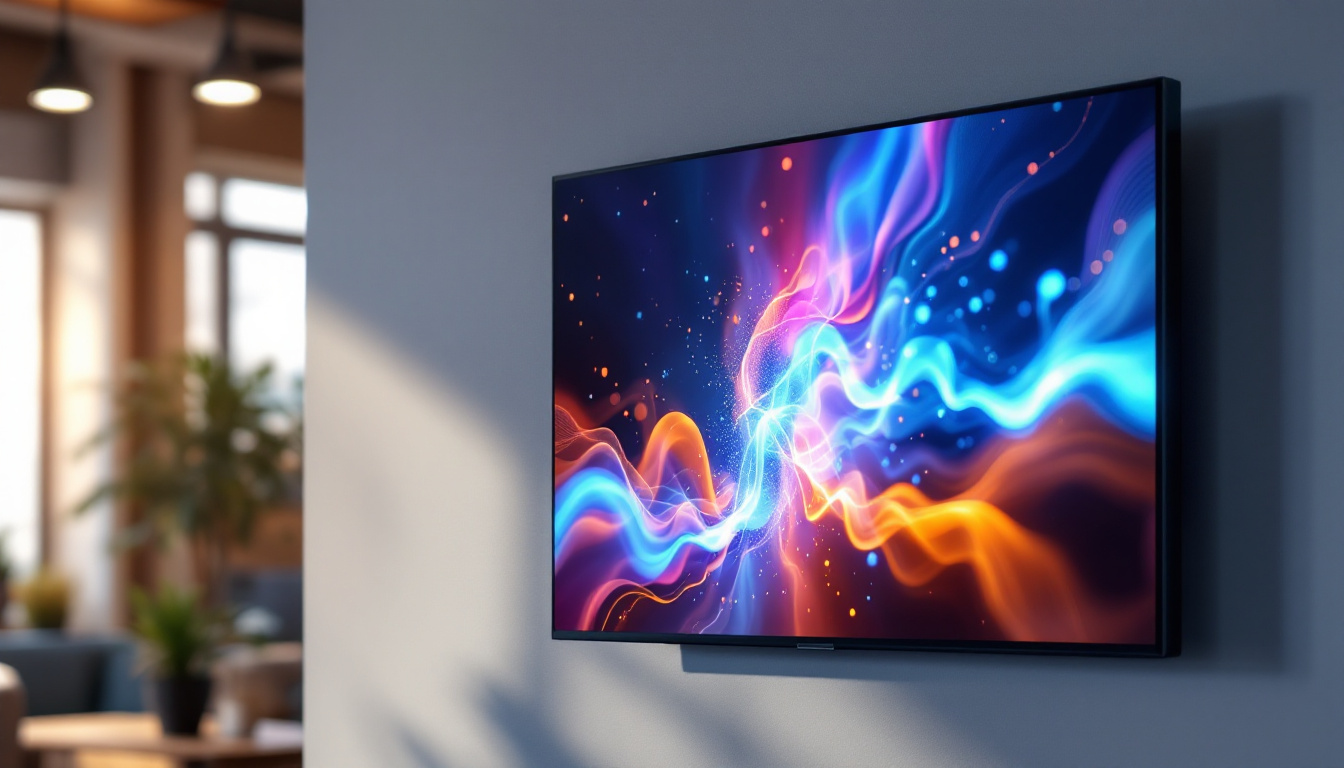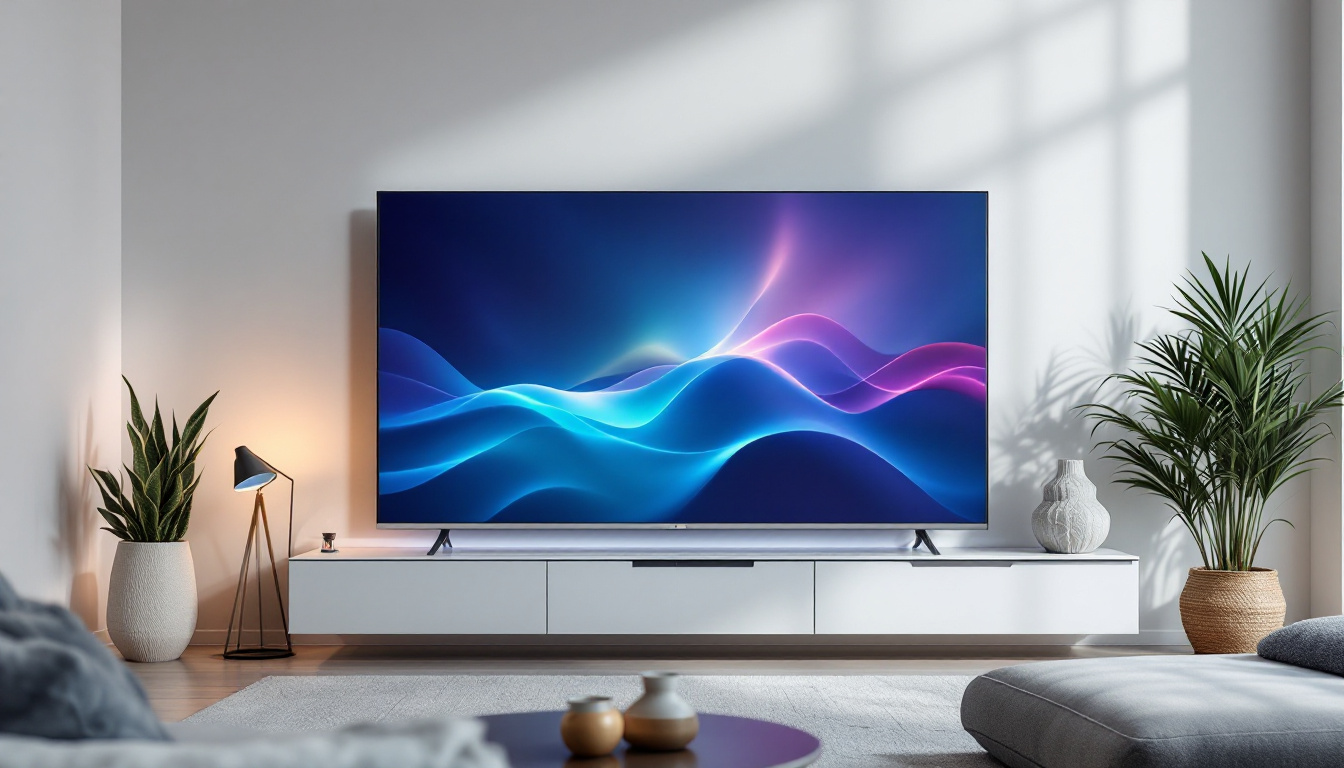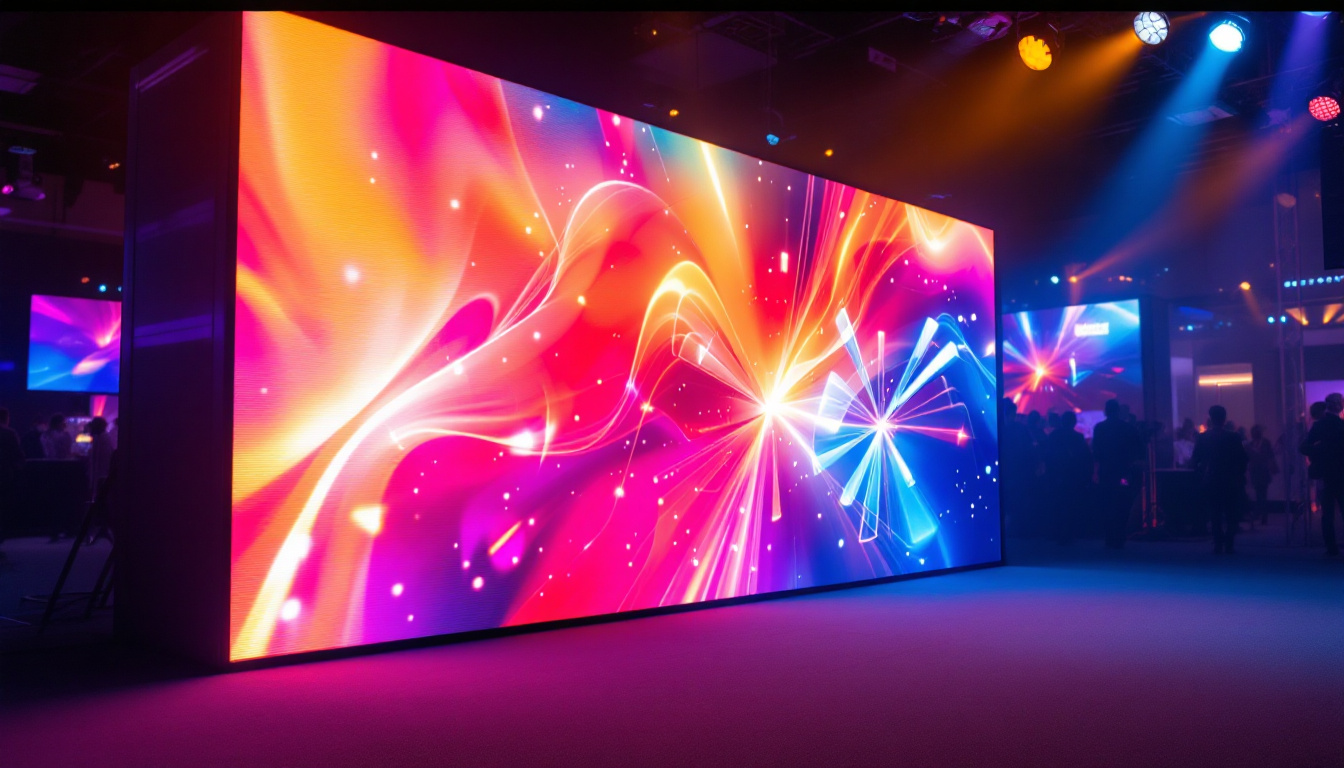Large TV Sales: LED Display Explained
In recent years, the television market has witnessed a significant shift towards larger screens, with LED displays becoming the go-to choice for consumers. As technology advances, understanding the intricacies of LED displays can help buyers make informed decisions when purchasing a new television. This article delves into the key aspects of LED displays, their benefits, and what to consider when buying a large TV.
Understanding LED Technology
LED, or Light Emitting Diode, technology has revolutionized the way images are displayed on screens. Unlike traditional LCDs that use fluorescent backlighting, LED displays utilize an array of tiny light-emitting diodes to illuminate the screen. This innovation not only enhances picture quality but also contributes to energy efficiency. The shift to LED technology has led to thinner, lighter displays that can fit into a variety of environments, from home theaters to mobile devices, making it a versatile choice for consumers and manufacturers alike.
How LED Displays Work
At the core of LED technology is the concept of backlighting. In an LED TV, the screen is lit from behind, allowing for brighter images and deeper blacks. There are two main types of LED backlighting: edge-lit and full-array. Edge-lit LED TVs have LEDs positioned along the edges of the screen, while full-array models feature a grid of LEDs behind the display. Full-array technology typically offers better contrast and uniformity. This means that viewers can enjoy a more immersive experience, especially when watching movies or playing video games where visual detail is paramount.
Additionally, many LED TVs incorporate local dimming, which allows specific areas of the screen to dim or brighten independently. This feature enhances the overall viewing experience by improving the contrast ratio, making dark scenes appear more detailed and vibrant. The ability to control light in this manner is particularly beneficial for high dynamic range (HDR) content, which relies on a wide range of brightness levels to convey a more lifelike image. As a result, viewers can appreciate the subtleties in shadows and highlights that were previously lost in older display technologies.
Types of LED Displays
LED displays can be categorized into several types, each with its unique characteristics. The most common types include:
- Standard LED: The basic form of LED technology, providing good brightness and color accuracy.
- OLED: Organic Light Emitting Diodes offer superior contrast and color depth by allowing each pixel to emit its light. This means that OLED displays can achieve true blacks, as pixels can be turned off completely.
- QLED: Quantum Dot LED TVs utilize quantum dots to enhance color reproduction and brightness. This technology allows for a wider color gamut, making colors appear more vibrant and lifelike.
Each type has its pros and cons, making it crucial for consumers to consider their viewing habits and preferences when selecting a television. For instance, while OLED displays are often favored for their superior picture quality, they may come at a higher price point and can be susceptible to burn-in. On the other hand, QLED displays are known for their brightness and longevity, making them a great choice for well-lit rooms. Understanding these differences can help consumers make informed decisions tailored to their specific needs, whether they prioritize cinematic experiences, gaming performance, or everyday viewing.
The Advantages of LED Displays
LED displays come with a myriad of benefits, making them a popular choice among consumers. Understanding these advantages can help potential buyers appreciate why LED technology has become the standard for modern televisions.
Picture Quality
One of the most compelling reasons to choose an LED display is its exceptional picture quality. With higher brightness levels and improved contrast ratios, LED TVs can produce stunning visuals that enhance the viewing experience. Colors appear more vibrant, and details in both bright and dark scenes are more pronounced.
Furthermore, advancements in technology, such as HDR (High Dynamic Range), have taken picture quality to new heights. HDR allows for a wider range of colors and brightness levels, resulting in a more lifelike image. This feature is particularly beneficial for movie enthusiasts and gamers who crave immersive visuals.
Energy Efficiency
Energy efficiency is another significant advantage of LED displays. Compared to traditional LCD and plasma TVs, LED models consume less power, making them a more environmentally friendly option. This lower energy consumption not only reduces electricity bills but also lessens the overall carbon footprint.
Additionally, many LED TVs come with energy-saving features, such as automatic brightness adjustment and sleep timers, further enhancing their efficiency.
Thin and Lightweight Design
The design of LED TVs has evolved dramatically, with many models boasting ultra-thin profiles and lightweight constructions. This sleek design allows for easy wall mounting and integration into modern living spaces. Consumers can enjoy a large screen without sacrificing aesthetics or space.
Moreover, the lightweight nature of LED displays makes them easier to transport and install, providing added convenience for users.
Considerations When Buying a Large LED TV
While LED displays offer numerous benefits, there are several factors to consider when purchasing a large TV. These considerations can significantly impact the overall viewing experience and satisfaction with the product.
Screen Size and Viewing Distance
Choosing the right screen size is crucial for an optimal viewing experience. A general rule of thumb is to sit at a distance that is 1.5 to 2.5 times the diagonal size of the screen. For example, if a viewer is considering a 65-inch TV, the ideal viewing distance would be between 8 to 13 feet.
Additionally, the size of the room and the layout can influence the choice of screen size. A larger room can accommodate a bigger screen, while a smaller space may require a more modest size to avoid overwhelming the environment.
Resolution Matters
Resolution is another critical factor to consider when selecting a large LED TV. The most common resolutions available today are Full HD (1080p), 4K (2160p), and 8K (4320p). While Full HD is still a popular choice, 4K resolution has become the standard due to its superior clarity and detail.
For those looking to future-proof their purchase, 8K TVs are emerging in the market, offering even higher resolution. However, it’s essential to consider the availability of 8K content, as it is still limited compared to 4K offerings.
Smart Features and Connectivity
In the age of streaming services and smart home integration, having a TV with smart features is increasingly important. Most modern LED TVs come equipped with built-in streaming apps, voice control, and compatibility with smart home devices.
When evaluating smart features, consider the user interface, app availability, and ease of navigation. Additionally, ensure the TV has sufficient HDMI and USB ports to accommodate external devices such as gaming consoles, Blu-ray players, and sound systems.
Popular Brands and Models
The market is flooded with various brands and models of LED TVs, making it essential for consumers to familiarize themselves with reputable options. Some of the most popular brands known for their quality and innovation include:
- Samsung: Renowned for its QLED technology and impressive picture quality.
- Sony: Offers high-end OLED models with exceptional color accuracy and contrast.
- LG: Known for its OLED displays and user-friendly smart features.
- TCL: Provides budget-friendly options with solid performance and features.
When selecting a brand, it’s essential to read reviews and compare models to find the best fit for individual needs and preferences.
Where to Buy Large LED TVs
Purchasing a large LED TV can be done through various channels, including online retailers, brick-and-mortar stores, and specialty electronics shops. Each option has its advantages and disadvantages, and consumers should consider their preferences when deciding where to buy.
Online Retailers
Online shopping offers convenience and often a broader selection of models and brands. Retailers such as Amazon, Best Buy, and Walmart provide detailed product descriptions, customer reviews, and competitive pricing. Additionally, online shopping allows for easy price comparisons, ensuring consumers get the best deal.
However, buying online may come with challenges, such as not being able to see the TV in person before purchase. It’s essential to check return policies and warranty options to mitigate any potential issues.
Physical Stores
Visiting a physical store allows consumers to see the TV in action, providing a better understanding of picture quality and features. Retailers like Best Buy and local electronics stores often have a range of models on display, allowing for hands-on experience.
Additionally, knowledgeable sales staff can provide valuable insights and answer any questions. However, prices may be less competitive than online retailers, and inventory may be limited.
Specialty Electronics Shops
Specialty electronics shops often carry high-end models and provide personalized service. These stores may offer expert advice and installation services, making them an excellent choice for consumers seeking premium options and support.
While prices may be higher at specialty shops, the level of service and expertise can justify the cost for those looking for a top-tier television experience.
Conclusion
As the demand for larger televisions continues to grow, understanding LED display technology becomes increasingly important. With their superior picture quality, energy efficiency, and sleek designs, LED TVs are a popular choice for consumers. By considering factors such as screen size, resolution, smart features, and reputable brands, buyers can make informed decisions that enhance their viewing experience.
Whether purchasing online or in-store, taking the time to research and compare options will ensure that consumers find the perfect large LED TV to suit their needs. As technology continues to evolve, staying informed about the latest advancements will help buyers enjoy the best that the television market has to offer.
Discover LumenMatrix’s Advanced LED Display Solutions
Ready to elevate your viewing experience with the latest in LED display technology? Look no further than LumenMatrix, a pioneer in crafting immersive visual displays that go beyond conventional viewing. From vibrant Indoor LED Wall Displays to dynamic Outdoor LED Wall Displays, and from versatile Vehicle LED Displays to innovative Custom LED Solutions, LumenMatrix offers a comprehensive range of products designed to transform your space and captivate your audience. Embrace the future of visual communication and check out LumenMatrix LED Display Solutions today to see how you can make a lasting impression with clarity and impact.































